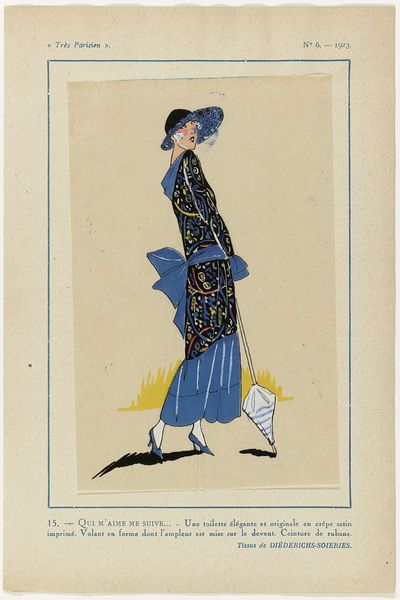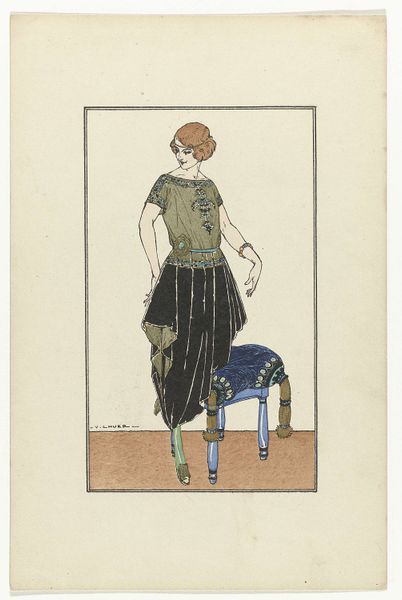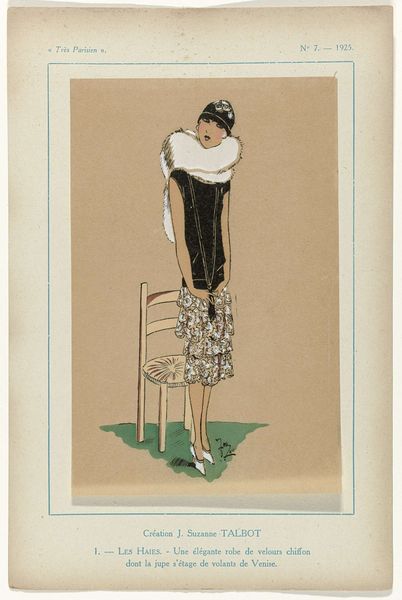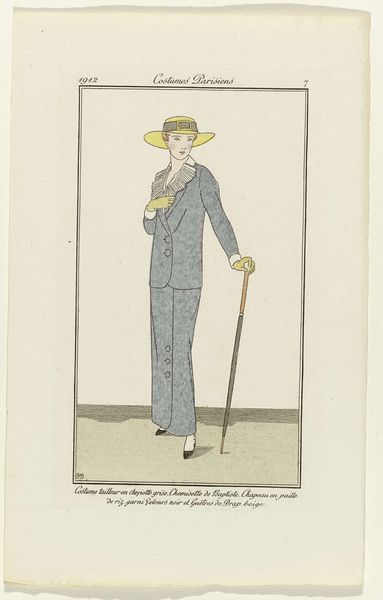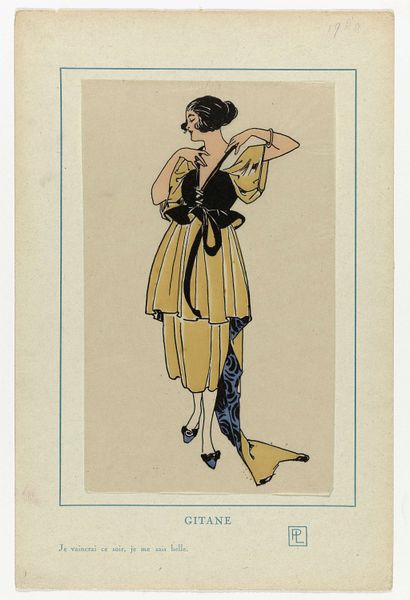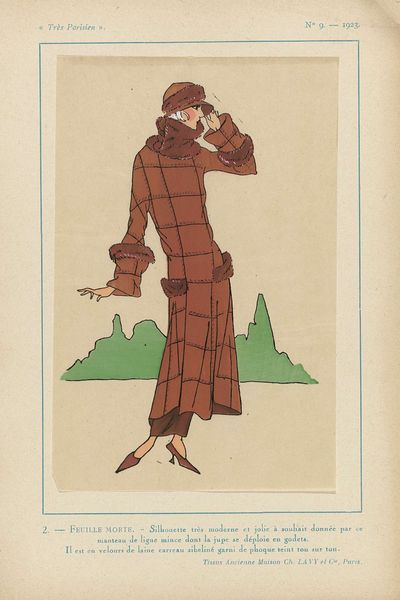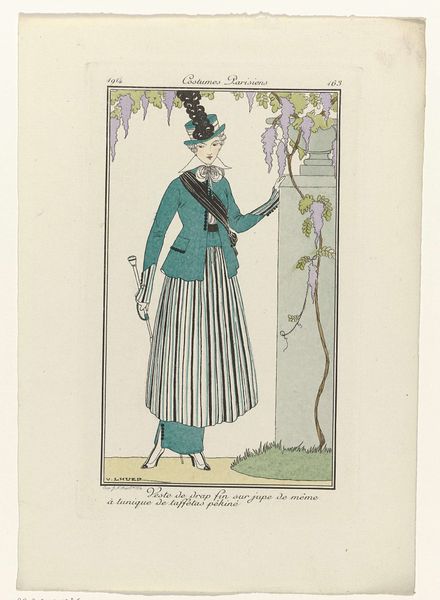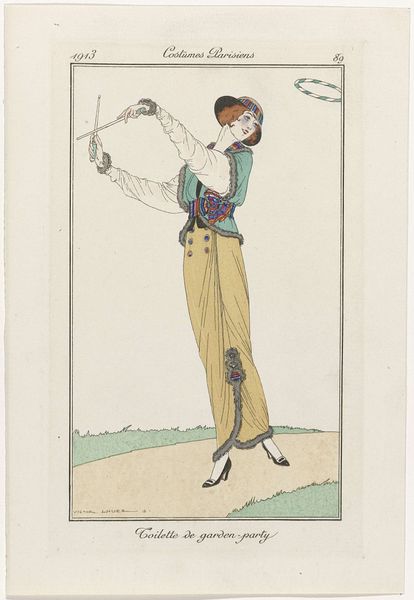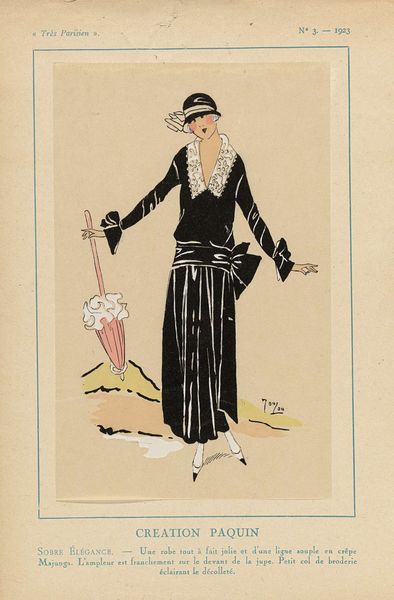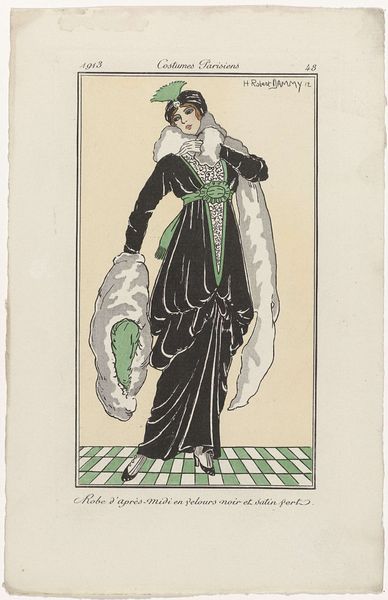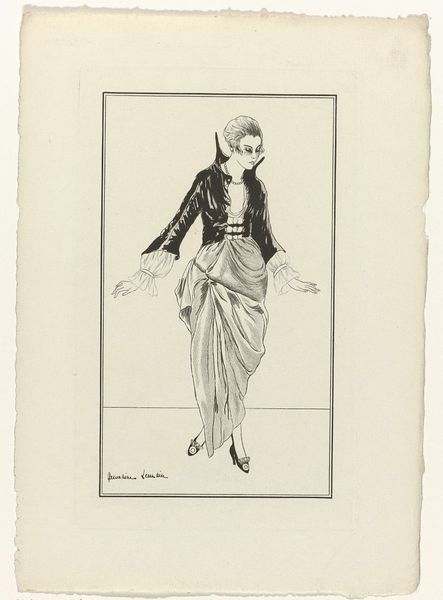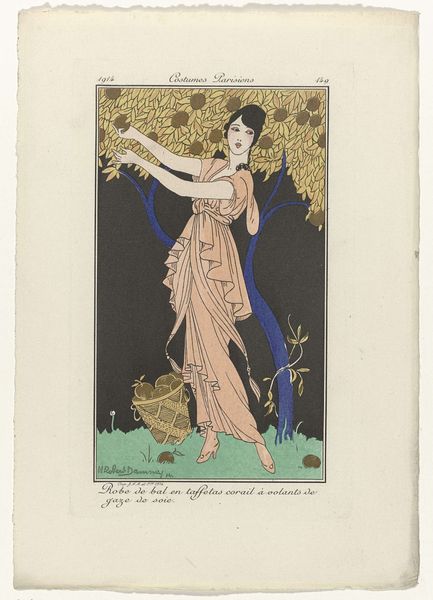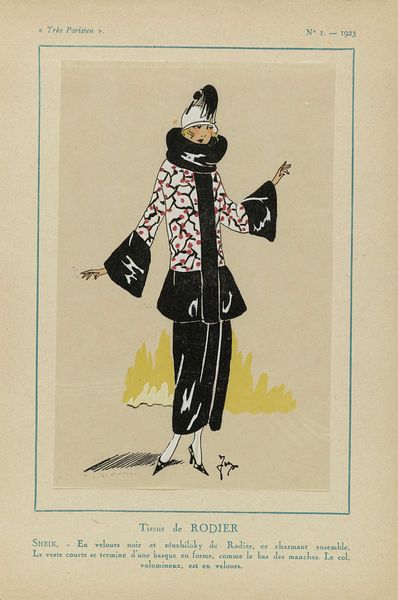
Ses modèles exclusifs, René Sacerdote, ca. 1921, No. 133 : Robe d'après-mid (...) c. 1921
0:00
0:00
Dimensions: height 248 mm, width 163 mm
Copyright: Rijks Museum: Open Domain
Victor Lhuer made this fashion plate in 1921, using gouache and graphite. It's a great example of how process and intention come together in art. The color palette is restrained, mostly blacks and blues with some white and gold highlights, but it’s the line that really sings here. Look at how the graphite is used to define the figure, with each stroke feeling confident and precise. The gouache adds a layer of opacity, but the marks are still visible, like ghosts of previous decisions. The texture is smooth, almost velvety, and the colors are really saturated. It’s a controlled effect, but there’s a playfulness in the layering and the way the artist teases out the details. This piece reminds me a little of Erté, another artist who captured the glamour of the Art Deco era but Lhuer uses line in a more graphic, dynamic way. Like all good art, it's less about answers and more about the questions it provokes.
Comments
No comments
Be the first to comment and join the conversation on the ultimate creative platform.
